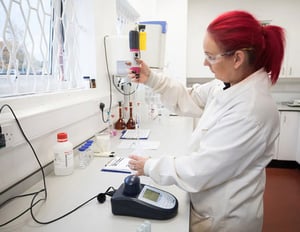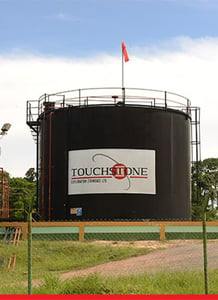BlackRock Income and Growth Investment Trust plc (LON:BRIG) has announced its latest portfolio update.
All information is at 31 October 2022 and unaudited.
For more information on the BlackRock Income and Growth Investment Trust and how to access the opportunities resented by the income and growth sector, please visit: www.blackrock.com/uk/brig
Performance at month end with net income reinvested
| One Month | Three Months | One Year | Three Years | Five Years | Since 1 April 2012 | |
| Sterling | ||||||
| Share price | -5.0% | -12.8% | -7.0% | -3.2% | -0.1% | 88.1% |
| Net asset value | 3.1% | -5.0% | -2.3% | 6.1% | 8.8% | 91.1% |
| FTSE All-Share Total Return | 3.1% | -4.6% | -2.8% | 7.1% | 12.7% | 88.7% |
Source: BlackRock
BlackRock took over the investment management of the Company with effect from 1 April 2012.
At month end
Sterling:
| Net asset value – capital only: | 187.44p |
| Net asset value – cum income*: | 191.63p |
| Share price: | 171.00p |
| Total assets (including income): | £44.6m |
| Discount to cum-income NAV: | 10.8% |
| Gearing: | 2.4% |
| Net yield**: | 4.2% |
| Ordinary shares in issue***: | 21,171,914 |
| Gearing range (as a % of net assets): | 0-20% |
| Ongoing charges****: | 1.2% |
* Includes net revenue of 4.19 pence per share
** The Company’s yield based on dividends announced in the last 12 months as at the date of the release of this announcement is 4.2% and includes the 2021 final dividend of 4.60p per share declared on 13 January 2022 and paid to shareholders on 17 March 2022, and the 2022 interim dividend of 2.60p per share declared on 22 June 2022 with pay date 1 September 2022.
*** excludes 10,081,532 shares held in treasury.
**** The Company’s ongoing charges are calculated as a percentage of average daily net assets and using management fee and all other operating expenses excluding finance costs, direct transaction costs, custody transaction charges, VAT recovered, taxation and certain non-recurring items for the year ended 31 October 2021.
| Sector Analysis | Total assets (%) |
| Support Services | 12.6 |
| Oil & Gas Producers | 9.8 |
| Pharmaceuticals & Biotechnology | 9.0 |
| Media | 8.4 |
| Household Goods & Home Construction | 6.9 |
| Banks | 5.7 |
| Mining | 5.3 |
| Financial Services | 4.7 |
| Tobacco | 4.2 |
| Nonlife Insurance | 3.4 |
| Personal Goods | 3.1 |
| Electronic & Electrical Equipment | 2.9 |
| Travel & Leisure | 2.7 |
| General Retailers | 2.7 |
| Health Care Equipment & Services | 2.7 |
| Food Producers | 2.7 |
| Life Insurance | 2.6 |
| Fixed Line Telecommunications | 1.2 |
| Gas, Water & Multiutilities | 1.1 |
| Industrial Engineering | 0.9 |
| Real Estate Investment Trusts | 0.6 |
| Net Current Assets | 6.8 |
| —– | |
| Total | 100.0 |
| ===== |
| Country Analysis | Percentage |
| United Kingdom | 86.3 |
| United States | 3.2 |
| France | 2.7 |
| Finland | 1.0 |
| Net Current Assets | 6.8 |
| —– | |
| 100.0 | |
| ===== | |
Top 10 holdings | Fund % |
| AstraZeneca | 7.9 |
| Shell | 7.8 |
| RELX | 5.4 |
| Reckitt Benckiser | 4.4 |
| British American Tobacco | 4.2 |
| Rio Tinto | 3.7 |
| Unilever | 3.1 |
| 3i Group | 3.0 |
| Pearson | 3.0 |
| Smith & Nephew | 2.7 |
Commenting on the markets, representing the Investment Manager noted:
Performance Overview:
The Company returned 3.1% during the month, performing in-line with the FTSE All-Share Index which also returned 3.1%.
Global equity markets rebounded in October on hopes that major central banks will start to slow and halt rate hikes.
US payroll data in the month was close to consensus and slowing, with no improvement in the supply of labour. The US core CPI rose 0.6% on the month and took the annual rate to 6.6%1 – a new 40-year high. The details showed more spending normalization toward services and away from goods, yet that was overwhelmed by high services inflation, especially in housing. The Biden administration imposed sweeping export controls including a measure to cut China from certain semiconductor chips, making a significant escalation in strategic competition between the two countries and adding to global supply chain fragmentation risks.
Meanwhile, across the border, the Bank of Canada hiked rates by a smaller-than-expected 50 bps2 and said it was getting closer to the end of its tightening cycle which provided some reprieve for risk assets. Later in the period, the European Central Bank (ECB) raised interest rates by 75 bps3 as anticipated but signalled it may slow the pace of hikes. Russia’s move to suspend its participation in an agreement that allowed grain exports from Ukraine sparked a 6% bounce in wheat futures – highlighting the upside risks to supply-led inflation exacerbated by the conflict. In the UK, Liz Truss resigned from office less than two months after assuming the post following a chaotic period where her plans for large, unfunded tax cuts sparked market turmoil and forced a total policy reversal. Rishi Sunak taking office was met with some investor relief and a slight rally in sterling.
In China, the party congress saw further power consolidation under President Xi Jinping, which paves the way for greater state control of the economy and markets while maintaining the zero Covid policy. Markets reacted negatively, with shares with exposure to China underperforming during the period.
The FTSE All Share rose 3.1% with Oil & Gas, Consumer Services and Industrials as top performing sectors while Basic Materials underperformed.
Stocks:
Holdings in the portfolio exposed to China, most notably in the mining and financials sectors, underperformed.
Rio Tinto, BHP, and Standard Chartered were among the top detractors from active return during the period. Share prices of BHP and Rio Tinto fell alongside the fall in the price of iron ore. Standard Chartered reported solid results, however, was also impacted by developments in China, causing the share price to fall
The portfolio holding, Reckitt Benckiser was another top detractor from performance. Despite the company announcing a modest upgrade in revenue guidance of 6-8%, volumes were softer than expected causing a fall in share price. The company’s Air Care and VMS were a small drag on volumes with the Nutrition business still beating due to competitor, Abbott’s supply issues in the US. Lysol and Dettol continue to normalise, currently at 50% and 40% above pre-pandemic levels; whilst the former is still in decline, Dettol is now back into growth.
On the positive side, Mastercard and Pearson performed well during October and saw share price rises after delivering strong results. Growth is much better than expected in Pearson’s English Language Learners (ELL) offering, courseware and higher education. ELL and courseware were both driven by a better reopening effect, measured by international visas and exam scheduling, and clinical assessment continues to perform very strongly. The share price of Rentokil also rose after the company announced the completion of the acquisition of US-based pest control business, Terminix, making Rentokil the largest pest control business in North America.
Portfolio Activity:
During the period, we purchased a new portfolio holding in Next, a high-quality UK retailer that we had owned in the past. The quality comes from the strength of the management team, operational resilience, cash generation, and prudent capital allocation, while an increasing number of its competitors have left the industry. Next has renegotiated its rental costs to ensure its physical stores remain competitive, while investing in a strong logistics platform for both its own products and 3rd party brands. There is no doubt that the trading backdrop is challenging with USD weakness putting pressure on the gross margin while operating costs are also rising and the pressure on consumers will impact volumes. Consensus needs to come down c.10%, however, given that this leaves the shares on c.10x P/E, this is arguably discounted in the share price already.
We also sold the holding in Chart Industries. The company has made great progress and is exposed to themes around decarbonisation, however, we sold the holding following strong share price performance.
Outlook:
As we enter Q4, and we look ahead into 2023, the headwinds facing global equity markets continue to grow. Inflation has surprised in its depth and breadth so far, driven by ongoing COVID related disruption, the war in Ukraine, rising labour costs and the persistence of these factors. Central banks across the developed world continue to unwind ten years of excess liquidity by tightening monetary and fiscal policy, increasing interest rates and withdrawing stimulus. The recent ‘mini-budget’ in the UK highlights the ramification of policy errors in a tightening liquidity environment, with long dated gilts reaching levels last seen in 2004. The subsequent rise in the risk-free or discount rate has many consequences, not least the pressure on valuation frameworks and, notably, on un-profitable or extremely highly valued businesses. We are mindful of this and feel it is incredibly important to focus on companies with strong, competitive positions, at attractive valuations that can deliver in this environment.
The political and economic impact of the war in Ukraine has been significant in uniting Europe and its allies, whilst exacerbating the demand/supply imbalance in the oil and soft commodity markets likely pushing inflation higher for longer. We are conscious of the impact this has on the cost of energy, and we continue to expect divergent regional monetary approaches with the US being somewhat more insulated from the impact of the conflict, than for example, Europe. Complicating this further, is the continued impact COVID is having on certain parts of the world, notably China, which has used lockdowns to control the spread of the virus impacting economic activity. We also see the potential for longer-term inflationary pressure from decarbonisation and deglobalisation. It is difficult to have a high degree of confidence in how these evolve but as we have said previously, the risk of policy mistakes are as central banks attempt to curb inflation; too late to tighten and/or tightening too hard. We expect this, and the geopolitical ramifications of the Ukraine war, to be the prevailing debate of 2022 and beyond.
Although demand remains strong at present, the outlook for corporate revenue and earnings growth is likely to worsen over the course of 2022 as the pressure on real incomes raises the spectre once again of stagflation. A notable feature of our conversations with a wide range of corporates has been the ease with which they have been able to pass on cost increases and protect or even expand margins. We believe that when the transitory inflationary pressures start to fade (e.g. commodity prices, supply chain disruption) then pricing conversations will become more challenging. We are also increasingly focused on wage inflation which may be more persistent and yet, in our experience, harder to pass on. Corporates have already pointed to wages picking up, the introduction of bonuses and growing pressure on employee retention rates as competition for labour intensifies. We therefore believe that employee retention will be an important differentiator in 2022 given the productivity benefits of a stable workforce as labour market tighten further.
The UK’s policy has somewhat diverged from the G7 in fiscal policy terms as the new government attempts to create some economic momentum into an election cycle through looser fiscal policy. The market reaction to this was severe, with short term rates moving towards 6% forcing intervention by the BoE into buying long dated gilts to support liquidity. This government policy has, conversely, led to a worsening of the UK economic outlook despite the subsequent backtracking. Although the UK stock market retains a majority of internationally weighted revenues, the domestic facing companies have continued to be impacted by this backdrop, notably financials, housebuilders and property companies. Valuations across the market continue to remain highly supportive as currency weakness supports international earnings, whilst domestic earners are in many cases reaching COVID or Brexit lows in share price or valuation terms. Although we anticipate further volatility ahead as earnings estimates moderate, we know that in the course of time, risk appetites will return and opportunities are emerging.
As a reminder, we continue to concentrate the portfolio on businesses with pricing power and durable, competitive advantages as we see these as best placed to protect margins and returns over the medium and long-term. Further, we continue to have conviction in cash generative companies with exceptional management teams and underappreciated growth potential. At present, whilst we are excited by the attractive stock-specific opportunities on offer, we continue to approach the year with balance in the portfolio.
1Source: Financial Times, October 2022 link: https://www.ft.com/content/10a8f934-ee38-4d8e-b56e-5a27b7bb8f62
2Source: Financial Times, October 2022 link: https://www.ft.com/content/3124c03b-db13-41a7-a8a2-abf5ea2edb4b
3Source: Financial Times, October 2022 link: https://www.ft.com/content/c46e2f8d-c1c2-4ae1-9d1c-4b5dbf6f7f89
For more information on the BlackRock Income and Growth Investment Trust and how to access the opportunities resented by the income and growth sector, please visit: www.blackrock.com/uk/brig








































